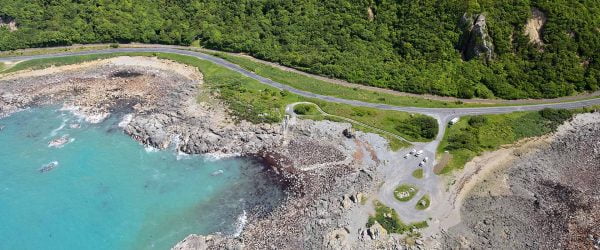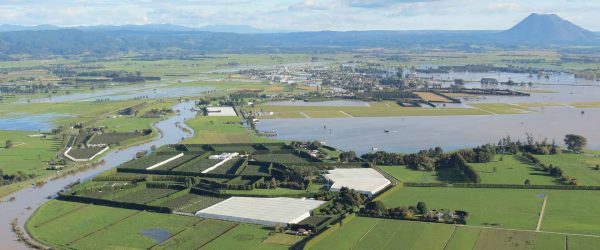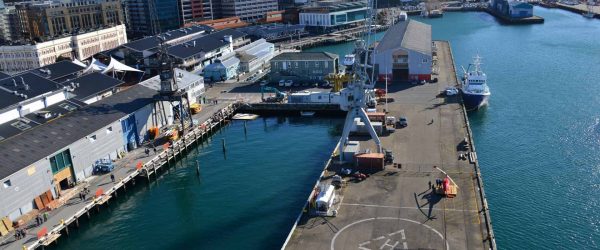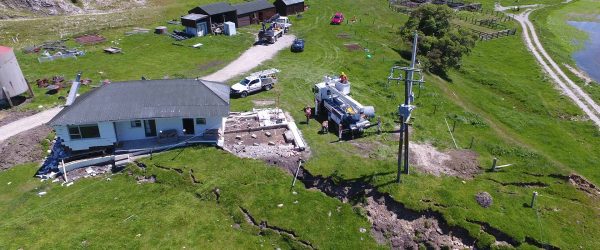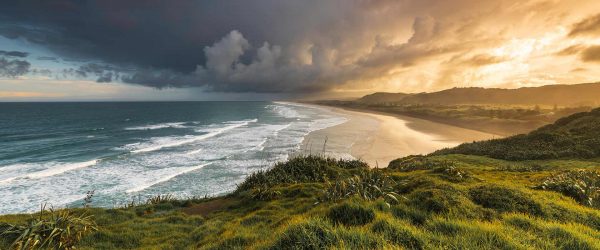Multihazard Risk
Ngā Tūraru Mōrearea-matarau
Vision
For resilience decision-making in Aotearoa New Zealand to be supported by world-leading forecasting models and decision-making tools that quantify the economic, social and environmental impacts of multihazards.
Programme description
Natural hazards often do not occur on their own but as part of a cascade of triggered events, or at the same time as other natural hazards by coincidence. These possibilities involve interactions and dependencies in hazard, impact, exposure and vulnerability that have not yet been understood or integrated into resilience modelling and decision-making.
We aim to provide resilience decision-makers with tools and methodologies that account for dynamic risk processes so they can plan for the impacts of multiple hazards. This includes insights into the economic, social and environmental impacts of multi-hazards, and how to ensure resilience planning and recovery efforts align with Te Ao Māori.
To do this, we worked with stakeholders and partners in central and local government and hapū and iwi to:
- develop the necessary mathematical and computational modelling methods to account for multiple and cascading hazards and the linked impacts to infrastructure.
- test the multihazard models using a case study.
- improve the MERIT (Measuring the Economics of Resilient Infrastructure) decision support tool to capture more impacts and provide insights into the changing nature of these impacts.
- investigate how the decision-support modelling tools RiskScape and MERIT can best be used by decision-makers in planning for uncertain future events and conditions.
- carry out kaupapa Māori and mātauranga Māori research to gain a better understand of Māori perspectives on hazard and risk.
Wawata
Kia tautokona ngā whakatau manawaroa i Aotearoa e ngā tauira matapae rangatira o te ao me ngā rauemi whakatau hei ine i te maha o ngā pānga o ngā mōrearea-matarau ki te ohanga, pāpori me te taiao.
Whakaahuatanga papatono
I te nuinga o ngā wā, kāore ngā mōrearea taiao e puta tūhāhā engari he āhuatanga kē o tētahi takunetanga e puta haere ana, ka puta orua rānei i te wā ka puta tētahi atu mōrearea taiao. He pāhekohekotanga, he whakawhirinakitanga tō ēnei tūponotanga i roto i ngā mōrearea, pānga, whakaraerae hoki, kāore anō kia māramatia, kia whakauruurutia rānei ki ngā mahi whakatauira manawaroa, whakatau hoki.
E whai ana mātou ki te whakarato i ngā rauemi me ngā tikanga ki ngā kaiwhakatau manawaroa e whakamāramatia nei i ngā pūnaha tūraru hihiri e taea ai e rātou te whakamahere i ngā pānga o ngā tini mōrearea. Ko uru hoki ko ngā tirohanga ki ngā pānga o ngā mōrearea-matarau ki te ohanga, pāpori me te taiao, ā, me pēhea e whakarite e hāngai ana ngā mahere manawaroa me ngā mahi whakaora ki Te Ao Māori.
Hei whakatutuki i tēnei, kei te mahi tahi mātou ki te hunga whaipānga me ngā hoa rangapū i te kāwanatanga ā-motu, ā-rohe, ngā hapū me ngā iwi ki te:
- whakawhanake i ngā tikanga whakatauira ā-pāngarau, ā-rorohiko hei whakamārama i ngā tini mōrearea e puta haere ana me ngā pānga e hāngai ana ki te tūāhanga
- whakamātau i ngā tauira mōrearea-matarau e whakawhanaketia ana e mātou mā tētahi take rangahau.
- whakapakari i te rauemi tautoko whakatau MERIT (Measuring the Economics of Resilient Infrastructure) hei hopu i ētahi atu pānga me te whakarato tirohanga ki te rerekē haere o te āhua o ēnei pānga.
- tūhura me pēhea ngā kaiwhakatau e whakamahi i ngā rauemi whakatauira tautoko-whakatau a RiskScape me MERIT ki tōna painga ki te whakamahere i ngā takunetanga me ngā āhuatanga ohorere o anamata.
- whakahaere rangahau kaupapa Māori, mātauranga Māori hoki kia whai māramatanga pai ake o ngā tūraru me ngā mōrearea.
Questions we’re answering
Research Team
Multihazard Risk
Latest Resource Outputs
Challenge Lifetime Summary
A summary of Resilience Challenge achievements and impacts over ten years of collaborative research
Brief communication: SWM – stochastic weather model for precipitation-related hazard assessments using ERA5-Land data
This work presents a stochastic weather model that allows rainfall to be robustly included in multi-hazard model simulations.
Simulating the post-earthquake morphological response of the lower Rangitaiki River, New Zealand
This study attempts to simulate post-earthquake changes to the Rangitaiki river bed, using a one-dimensional river morphological model.
Evaluation of residential building damage for the July 2021 flood in Westport, New Zealand
R. Paulik, A. Wild, C. Zorn, L. Wotherspoon, S. Williams 2024 Evaluation of residential building damage for the July 2021 flood in Westport, New Zealand…
Debris-flow risk-to-life: preliminary screening
T.R.H. Davies, M. Bloomberg, T.R. Robinson, D. Palmer 2024 Debris-flow risk-to-life: preliminary screening International Journal of Disaster Risk Reduction, 100, DOI: 10.1016/j.ijdrr.2023.104158
Impact of Droughts on Farms’ Financing Choices: Empirical Evidence from New Zealand
How drought severity impacts dairy and sheep/beef farm debt, equity and profitability.


